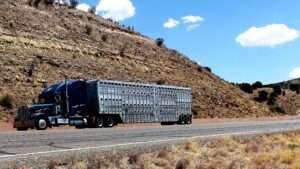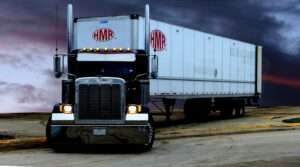Owning a Trucking Company: Complete Guide to Success in the Industry
Understanding the Trucking Industry
The trucking industry is of paramount importance to the economy, playing a vital role in the transportation of goods across vast distances. It serves as a critical link between manufacturers, suppliers, retailers, and consumers, ensuring the smooth flow of goods and facilitating economic growth. Without the trucking industry, the supply chain would be severely disrupted, leading to shortages of essential goods and hindering business operations on a large scale.
Trucking companies are responsible for transporting goods efficiently and reliably, enabling businesses to meet customer demands and maintain inventory levels. From delivering raw materials to manufacturing facilities to transporting finished products to distribution centers or directly to consumers, trucks are the primary mode of transportation for a wide range of industries, including retail, manufacturing, agriculture, and construction.

Initial Steps to Starting a Trucking Company
Define Your Business Model:
The first step in starting a trucking company is to define your business model. Consider the type of trucking services you want to provide, such as long-haul, regional, or local transportation. Determine if you want to specialize in a particular industry or handle a wide range of goods. Assess whether you plan to operate as an owner-operator or establish a fleet of trucks with employed drivers. Clearly defining your business model will help you make informed decisions throughout the startup process.
Create a Business Plan:
Creating a comprehensive business plan is crucial for the success of your trucking company. Your business plan should include an executive summary, company description, market analysis, competitor assessment, marketing and sales strategies, organizational structure, and financial projections. It should also outline your goals, objectives, and growth plans. A well-crafted business plan will serve as a roadmap and a valuable tool for attracting investors and securing financing.
Research and Secure Financing:
Researching and securing financing is an important step in starting a trucking company. Evaluate your financial needs, taking into account expenses such as purchasing or leasing trucks, insurance, fuel, maintenance, licensing fees, and employee salaries. Explore different financing options, including traditional bank loans, Small Business Administration (SBA) loans, equipment financing, and grants. Prepare a solid financial plan, including accurate cost estimates and revenue projections, to present to potential lenders or investors.
Choose the Right Legal Structure:
Selecting the appropriate legal structure is essential for your trucking company. Common options include sole proprietorship, partnership, limited liability company (LLC), and corporation. Each structure has its advantages and disadvantages in terms of liability protection, tax implications, management flexibility, and complexity. Consult with an attorney or a business advisor to determine the best legal structure for your specific needs. Consider factors such as personal liability, future growth plans, and the number of owners involved.
By following these initial steps, you will establish a solid foundation for your trucking company. Defining your business model, creating a comprehensive business plan, securing adequate financing, and choosing the right legal structure will set you on the path to success in the trucking industry.

Obtaining Licenses and Permits
Commercial Driver’s License (CDL):
A Commercial Driver’s License (CDL) is a crucial requirement for individuals who plan to operate commercial vehicles. The CDL is issued by the Department of Motor Vehicles (DMV) and demonstrates that the driver has the necessary skills and knowledge to safely handle large trucks and transport goods. To obtain a CDL, applicants typically need to pass written exams, a skills test, and a medical examination. The CDL is categorized into different classes, such as Class A, B, or C, depending on the type and weight of the vehicles to be operated.
Motor Carrier Authority (MC Number):
The Motor Carrier Authority (MC Number) is issued by the Federal Motor Carrier Safety Administration (FMCSA) and is required for trucking companies engaged in interstate commerce. The MC Number serves as a unique identifier for the company and grants authorization to transport goods across state lines. To obtain an MC Number, trucking companies must complete the FMCSA’s Unified Registration System (URS) application, which includes providing information about the company’s ownership, insurance coverage, and safety protocols.
Unified Carrier Registration (UCR):
The Unified Carrier Registration (UCR) program is a federally mandated system that requires motor carriers, including trucking companies, to register and pay an annual fee based on the size of their fleet. The UCR program aims to promote safety and ensure compliance with federal regulations. Trucking companies must register with the UCR program and pay the fees to operate legally in participating states.
International Registration Plan (IRP):
The International Registration Plan (IRP) is an agreement among the United States and Canadian provinces that simplifies the registration process for vehicles traveling across jurisdictional boundaries. Under the IRP, trucking companies can obtain a single registration plate, known as an apportioned plate, which allows their vehicles to operate in multiple states or provinces. To participate in the IRP, trucking companies must meet specific criteria, including having a physical presence in a participating jurisdiction.
International Fuel Tax Agreement (IFTA):
The International Fuel Tax Agreement (IFTA) is an agreement among the United States and Canadian provinces that facilitates the reporting and payment of fuel taxes by motor carriers operating in multiple jurisdictions. Under the IFTA, trucking companies file a quarterly fuel tax report and make a single payment to their base jurisdiction, which then distributes the taxes to the appropriate jurisdictions. The IFTA eliminates the need for trucking companies to obtain fuel permits for each state or province they operate in, simplifying the fuel tax reporting process.
State and Local Permits:
In addition to the aforementioned licenses and permits, trucking companies may also need to obtain various state and local permits depending on the jurisdictions they operate in. These permits can include overweight or oversize permits for transporting heavy or large loads, temporary permits for specific routes or time periods, and special permits for hazardous materials or specific types of cargo. Trucking companies must research and comply with the permitting requirements of each state and local jurisdiction they operate in to ensure legal operations and avoid penalties.
It is important for trucking company owners to familiarize themselves with the specific requirements and regulations related to licenses and permits in their operating jurisdictions. Non-compliance can lead to fines, penalties, and potential disruption of business operations. Seeking guidance from industry associations, legal professionals, and relevant government agencies can be beneficial in navigating the complexities of obtaining the necessary licenses and permits.
Building Your Fleet
Types of Trucks and Trailers:
When it comes to building your trucking company’s fleet, it’s crucial to understand the different types of trucks and trailers available. The choice of vehicles will depend on the nature of your business and the types of goods you plan to transport. Common types of trucks include tractor-trailers (also known as semi-trucks or 18-wheelers), straight trucks, and dump trucks. Trailers can vary from dry van trailers for general cargo to flatbed trailers for hauling large or heavy items. Tanker trailers are used for transporting liquids, while refrigerated trailers are designed for perishable goods. Research and evaluate which types of trucks and trailers align with your business goals and industry requirements.
Purchasing vs. Leasing Options:
Once you have identified the types of trucks and trailers suitable for your operations, the next consideration is whether to purchase or lease them. Purchasing offers long-term ownership and control, allowing you to customize and tailor the vehicles to your specific needs. It also provides potential asset appreciation and the ability to build equity. On the other hand, leasing provides more flexibility, lower upfront costs, and the opportunity to upgrade your fleet more frequently. Leasing can be advantageous for new businesses or those with fluctuating transportation needs. Consider your financial situation, growth projections, and operational requirements to determine the most suitable option for your trucking company.
Maintenance and Safety Considerations:
Maintaining a well-maintained fleet is essential for ensuring the safety of your drivers, complying with regulations, and minimizing breakdowns and disruptions to your operations. Implement a regular maintenance schedule for your trucks and trailers, including inspections, servicing, and repairs. Train your drivers on pre-trip inspections and encourage them to report any issues promptly. Emphasize safety protocols, including defensive driving techniques and adherence to hours-of-service regulations. Promote a culture of safety within your company, provide ongoing training, and stay updated on industry best practices to mitigate risks and promote a safe operating environment.
Insurance Requirements:
Operating a trucking company requires adequate insurance coverage to protect your business, drivers, and cargo. Insurance requirements may vary depending on the jurisdiction and the types of goods you transport. Common insurance types for trucking companies include liability insurance, cargo insurance, and physical damage coverage. Liability insurance covers damages and injuries caused to others in the event of an accident. Cargo insurance protects the goods being transported in case of theft, damage, or loss. Physical damage coverage covers repairs or replacements for your trucks and trailers in case of accidents or other covered events. Work with a reputable insurance provider experienced in the trucking industry to ensure you have the appropriate coverage that meets legal requirements and adequately protects your assets.
By carefully selecting the types of trucks and trailers, considering the pros and cons of purchasing versus leasing, prioritizing maintenance and safety, and obtaining the right insurance coverage, you can build a reliable and efficient fleet for your trucking company. Remember to conduct thorough research, consult industry experts, and make informed decisions that align with your business goals and operational needs.

Hiring and Training Drivers
Driver Qualifications and Background Checks:
When it comes to hiring drivers for your trucking company, it is crucial to ensure that they possess the necessary qualifications and meet industry standards. Here are some key aspects to consider during the driver hiring process:
Commercial Driver’s License (CDL): Verify that all potential drivers hold a valid CDL appropriate for the type of vehicles they will be operating. Different CDL classifications exist for various types of trucks, such as Class A, Class B, and Class C.
Driving Experience: Assess the driving experience of candidates. While hiring experienced drivers is generally preferred, you may also consider hiring entry-level drivers and providing comprehensive training programs.
Safety Record: Review the safety records of potential drivers, including any accident history or traffic violations. A clean driving record demonstrates a commitment to safety and adherence to traffic laws.
Medical Fitness: Ensure that drivers undergo medical examinations to assess their physical fitness for long-haul driving. This includes meeting vision, hearing, and general health requirements.
Drug and Alcohol Testing: Implement a stringent drug and alcohol testing policy to maintain a safe working environment. Regular screenings should be conducted as per DOT regulations.
Background Checks: Perform thorough background checks on candidates, including employment history, criminal records, and references. This step helps ensure the integrity and reliability of your drivers.
By conducting a comprehensive assessment of driver qualifications and background checks, you can build a team of reliable and skilled drivers who uphold safety standards and positively represent your trucking company.
Developing a Training Program:
A well-designed training program is essential for equipping drivers with the necessary skills and knowledge to perform their duties efficiently and safely. Consider the following elements when developing your driver training program:
Orientation: Begin with an orientation program that introduces new drivers to your company’s policies, procedures, and safety protocols. Cover topics such as driver expectations, company culture, and emergency procedures.
Defensive Driving: Emphasize defensive driving techniques that promote safe and responsible behavior on the road. Teach drivers to anticipate potential hazards, maintain appropriate following distances, and react appropriately in challenging situations.
Equipment Familiarization: Provide thorough training on the specific equipment and vehicles your drivers will be operating. This includes instruction on vehicle controls, pre-trip inspections, and basic maintenance procedures.
Cargo Handling and Securement: Teach drivers proper techniques for loading, securing, and unloading cargo. Emphasize the importance of weight distribution, load stability, and compliance with relevant regulations.
Route Planning and Navigation: Train drivers on effective route planning, utilizing GPS systems, and understanding traffic patterns. Teach them how to optimize routes for efficiency, minimize fuel consumption, and avoid congestion.
Hazardous Materials (Hazmat) Training: If your company transports hazardous materials, ensure that drivers receive appropriate training in handling and transporting these substances safely and in compliance with applicable regulations.
Ongoing Training and Professional Development: Implement a program for continuous education and skills development. Offer refresher courses, safety seminars, and opportunities for drivers to stay updated with industry advancements.
Maximizing Profitability
Pricing Strategies and Rate Negotiation:
One of the crucial aspects of running a successful trucking company is developing effective pricing strategies and mastering rate negotiation techniques. Setting the right prices for your services ensures that you remain competitive in the market while maximizing profitability. Consider the following tips:
Research the Market: Understand the prevailing rates in the industry and analyze the pricing strategies of your competitors. This information will help you establish a baseline for your pricing structure.
Cost Analysis: Conduct a thorough cost analysis to determine your operating expenses, including fuel costs, maintenance, insurance, and driver salaries. Factor in these costs when setting your rates to ensure you cover all expenses while generating a profit.
Value Proposition: Identify your unique selling points and emphasize them when negotiating rates with potential customers. Highlight the benefits they will receive by choosing your services, such as reliability, on-time delivery, or specialized expertise.
Differentiate Your Services: Offer additional value-added services that differentiate your trucking company from the competition. For example, provide expedited shipping options, specialized handling for delicate goods, or real-time tracking systems. These added benefits can justify higher rates.
Negotiation Skills: Hone your negotiation skills to secure favorable rates with customers and brokers. Be prepared to showcase your track record, reliability, and efficiency. Negotiate fair terms that align with your costs and profit goals, while also considering the market demand and competition.
Fuel Management and Cost Optimization:
Fuel costs represent a significant portion of a trucking company’s expenses. Implementing effective fuel management and cost optimization strategies can significantly impact your profitability. Consider the following approaches:
Fuel Efficiency Technologies: Stay updated with the latest fuel-efficient technologies, such as aerodynamic enhancements, low-rolling-resistance tires, and engine optimization. Investing in these technologies can result in substantial fuel savings over time.
Driver Training: Provide your drivers with comprehensive training on fuel-efficient driving techniques, including minimizing idling, maintaining consistent speeds, and reducing unnecessary acceleration and braking. Encourage them to adopt fuel-saving habits, such as proper gear shifting and route planning.
Route Optimization: Utilize route optimization software or consult with a logistics expert to identify the most fuel-efficient routes for your deliveries. Minimizing distance and avoiding congested areas can significantly reduce fuel consumption.
Regular Vehicle Maintenance: Maintain a strict schedule for vehicle maintenance, including regular tune-ups, tire rotations, and air filter replacements. Well-maintained trucks operate more efficiently, resulting in lower fuel consumption.
Fuel Purchase Strategies: Explore fuel purchase programs and negotiate favorable agreements with fuel suppliers. Consider joining fuel networks or leveraging volume discounts to obtain competitive fuel prices.
Maintaining Strong Customer Relationships:
Building and maintaining strong relationships with your customers is vital for long-term success and repeat business. Satisfied and loyal customers can provide a steady stream of revenue. Consider the following practices:
Communication: Establish open lines of communication with your customers. Regularly update them on the status of their shipments, provide real-time tracking information, and promptly address any concerns or issues that arise.
Reliability and Timeliness: Consistently deliver shipments on time and in optimal condition. Reliable service builds trust and confidence in your company, enhancing customer satisfaction and loyalty.
Personalization: Tailor your services to meet the unique needs of each customer. Understand their specific requirements and preferences, and strive to exceed their expectations whenever possible. Offer flexible scheduling, customized reporting, or specialized handling if it aligns with your capabilities.
Proactive Problem-solving: Anticipate potential challenges and take proactive measures to address them. Keep your customers informed of any potential delays, route changes, or other issues that may impact their shipments. Offer solutions and alternatives to mitigate any inconveniences.
Customer Feedback: Regularly seek feedback from your customers to gauge their satisfaction levels. Implement customer satisfaction surveys, conduct periodic reviews, and actively listen to their concerns and suggestions. Use this feedback to improve your services and strengthen your relationships.
Monitoring Key Performance Indicators (KPIs):
Monitoring key performance indicators (KPIs) is essential for assessing the financial health and operational efficiency of your trucking company. By tracking these metrics, you can identify areas for improvement and make informed decisions to maximize profitability. Consider the following KPIs:
Revenue per Mile: Calculate the revenue generated for every mile driven. This metric helps evaluate the profitability of each trip and identify opportunities to increase rates or optimize routes.
Empty Miles: Monitor the percentage of miles driven with no load. Minimizing empty miles is crucial for maximizing revenue and reducing fuel costs. Seek backhauls or implement strategies like load pooling to decrease empty miles.
Deadhead Percentage: Deadhead percentage represents the portion of miles driven without generating revenue or carrying a load. Minimize deadhead miles by strategically planning routes and coordinating with customers and brokers.
Driver Turnover Rate: Keep track of the rate at which drivers leave your company. High turnover can be costly due to recruitment and training expenses. Implement driver retention strategies, such as competitive compensation packages, recognition programs, and career development opportunities.
Maintenance Costs: Monitor the expenses related to vehicle maintenance and repairs. Regularly review maintenance records and identify opportunities for preventive maintenance to minimize unexpected breakdowns and costly repairs.
Profit Margins: Calculate the profit margin for each shipment or customer. This metric provides insights into the profitability of different segments of your business. Identify high-margin customers and routes, and focus on maximizing revenue from those sources.
By implementing effective pricing strategies, optimizing fuel costs, maintaining strong customer relationships, and monitoring key performance indicators, you can position your trucking company for long-term profitability and success in the industry. Adapt to market changes, continuously refine your strategies, and stay informed about the latest industry trends to remain competitive in this dynamic field.

Resources and Support:
Industry Associations and Networks:
Joining industry associations and networks can provide valuable resources, networking opportunities, and access to industry knowledge. Some prominent associations in the trucking industry include the American Trucking Associations (ATA), Owner-Operator Independent Drivers Association (OOIDA), and the National Association of Small Trucking Companies (NASTC). These organizations often offer educational resources, advocacy for industry issues, and networking events that can help you stay updated on industry trends and connect with other professionals.
Professional Development and Training Programs:
Continuous learning and professional development are crucial for success in the trucking industry. Many organizations offer training programs tailored to different aspects of the industry, such as fleet management, logistics, safety regulations, and business operations. The North American Transportation Management Institute (NATMI) and the Truckload Carriers Association (TCA) provide various educational resources and certifications to enhance your skills and knowledge.
Government Agencies and Resources:
Government agencies play a significant role in regulating and supporting the trucking industry. The Federal Motor Carrier Safety Administration (FMCSA) is responsible for enforcing safety regulations, issuing licenses and permits, and providing valuable resources for trucking company owners. Their website offers a wealth of information on compliance, safety programs, and industry updates. Additionally, state-level agencies, such as Departments of Transportation, can provide specific resources and support for trucking companies operating within their jurisdictions.
Owning a trucking company can be a rewarding and profitable venture, but it requires careful planning, continuous learning, and a commitment to compliance and safety. By understanding the nuances of the trucking industry, obtaining the necessary licenses and permits, investing in training and professional development, and leveraging the resources and support available, you can position your trucking company for success. Stay connected with industry associations, participate in professional development programs, and utilize the resources provided by government agencies to stay informed, adapt to industry changes, and navigate the challenges of owning a trucking company. With determination, strategic decision-making, and a focus on excellence, you can build a thriving trucking business in this dynamic industry.

